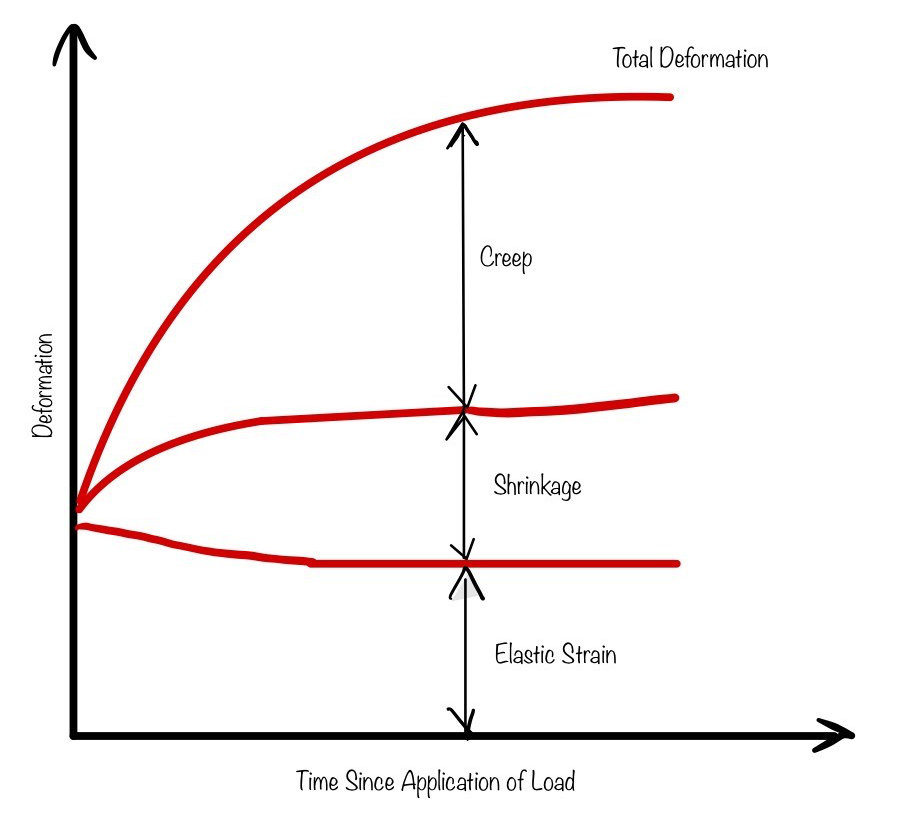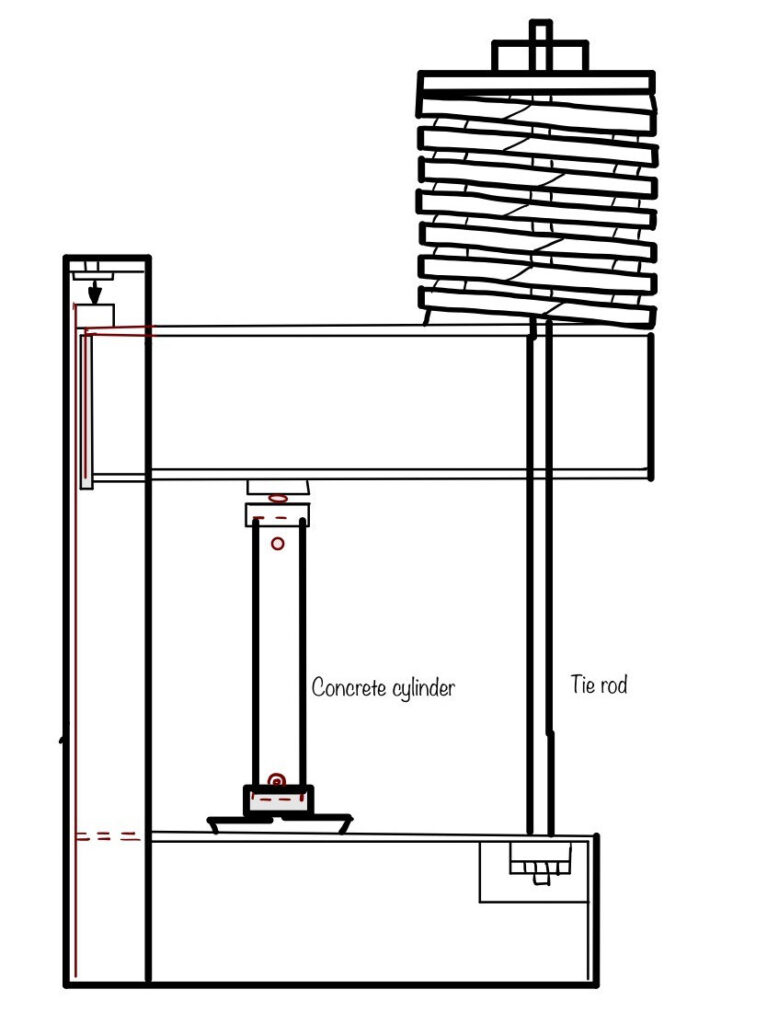Creep of concrete is a kind of deformation which occurs because of sustained loading. It is important to study the creep, because it can have a significant impact on the structural integrity, durability, and safety structures. The study of creep can help engineers and architects design, construct and maintain structures that are safe, sustainable, and durable.
The gradual increase in strain, without an increase in stress, with time, is due to creep. From this explanation, it can also be defined as the increase in strain under sustained stress.
Deformation due to creep occurs in the direction of applied force. For example if a column is getting more compressed or a beam is under bending stresses. Due to creep there is very less chance of structural failure. When a load is applied to concrete, it experiences an instantaneous elastic strain which develops into creep strain if the load is sustained for a long period of time.

All materials undergo creep under some conditions of loading to a greater or smaller extent. But concrete creeps significantly at all stresses and for a long time. Furthermore, creep is approximately linear function of stress upto 30 to 40 per cent of its strength.
Measurement of creep of concrete
Creep is usually determined by measuring the change with time in the strain of a specimen subjected to constant stress and stored under appropriate conditions. A typical testing device is shown in the figure below.
The spring ensures that the load is sensibly constant in spite of the fact that the specimen contracts with time. Under such conditions, creep continues for a very long time, but the rate of creep decreases with time.

Under compressive stress, the creep measurement associates with the shrinkage of concrete. It is generally assumed that the creep continues to assume a limiting value after an infinite time under load.
It is estimated that 20 year creep occurs in:
- 2 weeks: 26 percent of 20-year creep occurs.
- 3 months: 55 per cent of 20 year creep occurs.
- 1 year: 76 per cent of 20 year creep occurs.
Factors affecting creep of concrete
Studying creep can help engineers to design concrete structures that will perform well over time and minimize the need for costly repairs and maintenance. So it is important to know about the different factors that affects creep.
There can be different factors that affect the creep, some of them are:
- Load history: The history of load applied to the concrete also affects the creep of concrete, the more the load applied the more the creep.
- Influence of mix proportions: The mix design can also affect the creep of concrete. For example, a concrete mix with a high water cement ratio may be more susceptible to creep than a mix with a lower water cement ratio.
- Type of cement: Different types of cement can have different effects on the creep. For example, high strength concrete is less susceptible to creep than low strength concrete.
- Age of concrete: Creep increases with the age of the concrete. As concrete ages, the rate of creep also increases.
- Aggregates type: The type of aggregate used in the concrete can also affect the creep of concrete. Aggregates such as sand and gravel are less susceptible to creep than aggregates such as clay or silt.
- Type of curing: Proper curing of concrete can help to reduce the creep of concrete.
- Temperature: High temperatures can cause an increase in the rate of creep. This is because the concrete expands when it is hot, which can lead to increased deformation.
- Humidity: High humidity can also increase the rate of creep. This is because the concrete absorbs water, which can lead to increased deformation.
Conclusions
In conclusion, creep is a phenomenon that occurs when concrete is subjected to prolonged loading. It is a time dependent deformation that occurs in concrete structures, leading to limiting in their load bearing capacity.
To minimize the creep, the use of high-strength concrete can be considered. Additionally, regular maintenance and monitoring of the concrete structures are essential to ensure that the creep deformation does not cause any damage to the structure. Overall, creep of concrete is an important consideration in the design and construction of concrete structures, and it requires careful attention to minimize its effects.

Android Apps
⭐️ ⭐️ ⭐️ ⭐️ ⭐️ 1000+ | 400,000 + Downloads (Cumulative)
At eigenplus, our goal is to teach civil engineering students about structural analysis and design starting from the fundamental principles. We do this with the help of interactive android applications and accompanying web articles and videos.
Our apps have helped more than 400 thousand students across the world to understand and learn the concepts of structural engineering. Check out our apps on the google play store.
This article was crafted by a group of experts at eigenplus to ensure it adheres to our strict quality standards. The individuals who contributed to this article are:
Author


